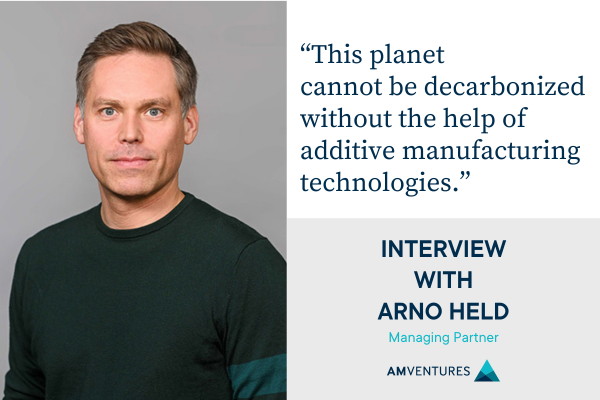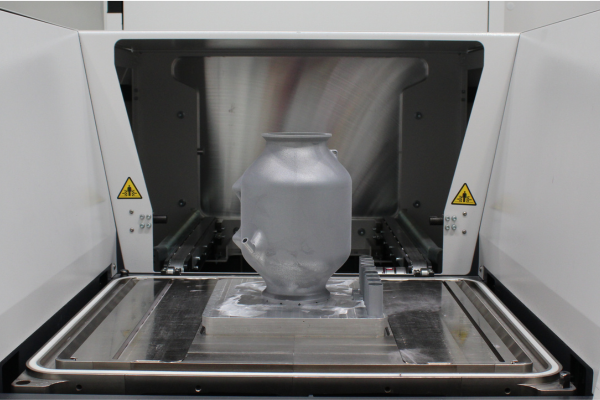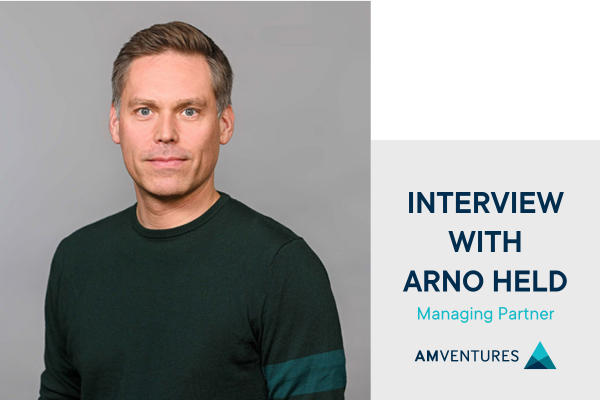We recently sat down with Arno Held, Managing Partner of AM Ventures to learn more about why he chose to invest in Conflux, where he sees the future of AM going, and why he’s convinced additive manufacturing is the key to decarbonizing the planet.
Arno, thanks for sitting down with us. AM Ventures invested in Conflux in its seed round, and again in our Series A round. Why did Conflux interest you?
We chose to invest in Conflux for a multitude of different reasons. First of all, all of our investment stories always start with a team that is passionate and convinced of what they are doing. Conflux consists of a fantastic team of highly experienced and passionate technology people who live and breathe thermal engineering day in and day out. There's a high level of competence within Conflux, not only from the history in Formula One and engineering in general, but also with their long history in thermal engineering and thermal management.
Conflux has adapted this revolutionary technology to make it work within, what is to me one of the most exciting applications of 3D printing in general, generating extremely complex objects with a high surface to volume ratio that outperforms anything that is out there. Conflux is unique because we have a team that combines in-depth thermal management know-how with knowing how to apply additive manufacturing technologies to form something that simply makes sense and creates a lot of value.
We saw how much traction the team was generating in all different kinds of heat exchanger applications. And that created our conviction and our curiosity to invest in Conflux and join this team.
What would you say to those who are uncertain of additive manufacturing and its applications?
For myself, I've been part of this industry for 15 years now. I've seen it grow and mature. And especially as an early-stage venture capitalist that looks into the earliest stages of matureness and the most revolutionary applications of this technology, we are seeing new applications every single day.
Additive manufacturing is already more than 40 years old, and it's maturing and revolutionizing other manufacturing technologies and fields of applications for decades now. When you compare it to other manufacturing technologies, of course, this technology is still very young.
We are at the start of something that is extremely special that can change the world of industrial manufacturing, but this doesn't happen overnight.
What should companies know if they want to integrate additive manufacturing into their capabilities?
Introducing additive design principles and manufacturing principles into your own company's value chain needs to be done with full consequence. It means to develop entirely new products. It means you need a lot of support in building the know-how, how to design for this technology, not only in the product design phase, but also in the manufacturing design. And all supporting processes around all of these phases.
It's always good to try it yourself because you get to a point where you find out how much work it actually means to implement additive manufacturing technologies. This is not about simply unplugging a conventional manufacturing technology and replacing it with additive.
One big advantage to working with a partner like Conflux is you get a partner that can help you all along the entire value chain. The team can guide you through the entire process, helping define requirements for a certain application, developing an entire thermal management solution, even up to the entire manufacturing process.
What are the major drivers to bringing down the cost of AM parts?
We as an industry and also as users of the technology have high expectations in terms of productivity, quality, and material prices to come down so that we can open that whole range of applications and address more and more industries with our products and services.
The challenging thing about additive manufacturing is, of course, that you can produce batch size one like no other technology. The machine doesn't care if it produces 1,000 identical parts or 1,000 customized parts. This makes the entire technology very suitable to produce single number batches or just batch size one, as we call it.
From a mass manufacturing point of view, this brings a couple of challenges. High volume manufacturing engineers are always looking at this technology with a little bit of skepticism. The AM industry is under constant pressure to prove that we can also produce and deliver identical high volumes with consistent quality.
The productivity of an AM machine - how many pieces can one of these machines put out per hour per day per week - is certainly a very big factor for the cost per part. Slower machines mean that the manufacturing cost is still a high share in the cost per part in general. We see a really good trend, that these machines are becoming more productive and cheaper so that the machine hour in the cost per part drops significantly. The more this happens, the more important becomes the price of a kilogram of raw material.
How is Conflux’s approach to additive manufacturing contributing to growing the AM industry as a whole?
What we've seen in Conflux is that Michael Fuller and the entire team at Conflux, don't accept the status quo of additive manufacturing technology. They constantly push the envelope. They are talking to the machine vendors and the material suppliers, and telling them what needs to happen within this technology to make it even more suitable to the field of applications that we are addressing.
They are constantly helping to improve the technology and to make sure that the applications that they are developing are delivering more and more value, that the cost per parts are dropping, that the output of the machines is increasing, that the reliability of the technology and the quality output is increasing. And this leads to an entire industry, the additive manufacturing industry, becoming more and more mature and more and more industrialized.
What impact does additive manufacturing have on companies with sustainability goals?
I am deeply convinced that this planet cannot be decarbonized without the help of additive manufacturing technologies, whether you look into thermal applications or any kind of energy saving energy efficiency programs, especially when it comes to metal applications and ceramic applications.
In most cases, we're dealing with a surface to volume problem. So you want to generate the highest amount of surface within a predefined volume that you're given. And this challenge can only be solved with extremely clever algorithms producing designs that can only be 3D printed. And this goes beyond heat exchangers. This is filters. This is implants. This is antennas, just to name a few.
In the end, it's always about reducing the need for resources, for energy, for material, for space, for weight. All of this can be addressed with additive manufacturing technologies.
After all this time in this industry, the fact that we are addressing the world’s most pressing problems with this great technology and inspiring teams like Conflux Technology is still highly rewarding and motivating.
About Arno Held
Arno Held started AM Ventures together with Johann Oberhofer in 2015 when they realized an increasing demand for venture capital in Additive Manufacturing but a lack of competent investors to assess disruptive technologies.
Today, Arno is Managing Partner of the fund and specialises on the network around AM Ventures, as well as its global footprint and organisational growth. Since co-founding the company, Arno has been instrumental in building the AM Ventures team that has scouted several thousand startups and conducted more than thirty funding rounds all over the world.






